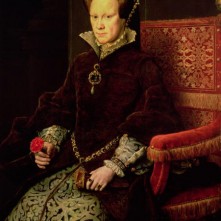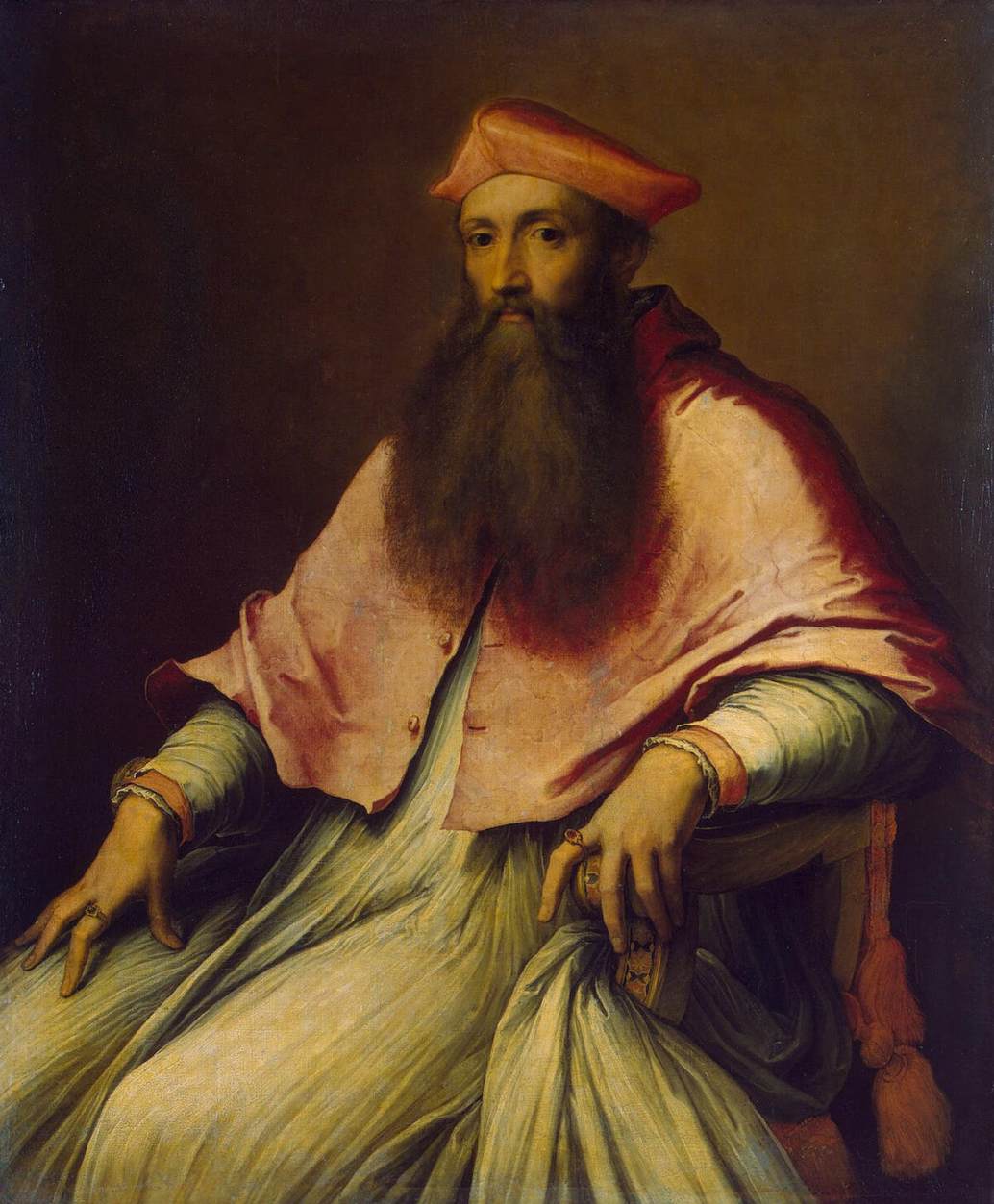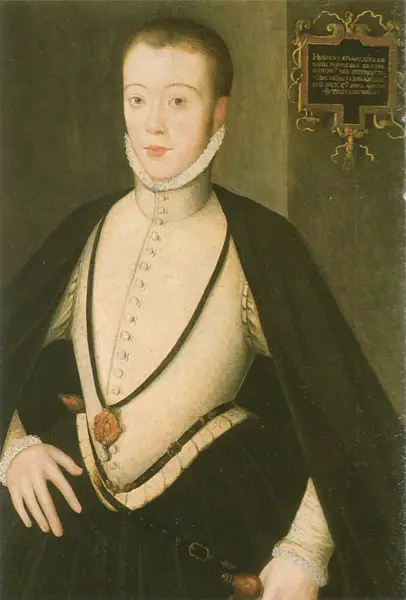
Mary I
The Diary of Henry Machyn Citizen and Merchant-Taylor of London (1550-1563):
The xiiij day of Desember [was] the quen('s) masse; and [all the lords] and lades, knyghtes and gentyll women, dyd offer. [And there was] a man of armes and horse offered; and her cotarmur, and sword, and targett, and baner of armes, and iij [standards]; and all the haroldes abowt her; and ther my lord bysshope of Wynchester mad the sermon; and ther was offered cloth of gold and welvet, holle pesses, [whole pieces] and odur thynges. [After the] masse all done, her grace was cared up [to the chapel] the kyng Henry the vij byldyd, with bysshopes [mitred;] and all the offesers whent to the grayffe [grave] and after [they] brake ther stayffes, and cast them in-to the grayffe; in the mayn tyme the pepull pluckt [down] the cloth, evere man a pesse that cold caycth [catch] [it,] rond a-bowt the cherche, and the armes. And after[wards,] my lord bysshope of Yorke, after her grace was [buried,] he declaryd an colasyon [collation], and as sone as he had made an end, all the trumpetes bluw a blast, and so the cheyff morners and the lords and knyghtes, and the bysshopes, with [the] abbott, whent in-to the abbay to dener, and all the offesers of the quen('s) cott [court].1
John Strype, in his Ecclesiastical Memorials, gives the same details as Machyn.2
Regarding the funeral procession, which took place the previous day, Machyn records:
"The xiij day of December, the corpse of the late Queen was brought from St. James's, in a cha]rett, with the pyctur of emages [a painted effigy] lyke [her person], adorned with cremesun velvett and her crowne on her hed, her septer on her hand, and mony goodly rynges on her fyngers; up the he-way [went] formett [foremost] [the] standard with the Faucon and [the Hart]; then cam a grett compene of morners; and after anodur godly standard of the Lyon and the Faucon [falcon]; and then her houshold servandes, ij and ij together, in blake gownes, [the] haroldes rydyng to and fro to se them go in order; and after cam the iij standard with the Whyt Grahond and the Faucon; and then cam gentyllmen in gownes, morners; and then cam rydyng sqwyrs, bayryng of baners of armes; and then cam my lord marques of Wynchester on hors-bake, bayryng the baner of the armes of England in-brodered with gold; and then cam after Chester the harold [herald], baryng the helm and the crest and mantyll; then cam master Norroy, bayryng the targett with the garter and the crowne; and then cam master Clarenshus (Clarencieux] bayreng the sword and after cam Garter, bayryng her cot-armur, on hors-bake they all; and baners borne abowt her, with knyghts, lords, and baners a-bowt the corse; with iiij harolds bayryng on horss-bake iiij whyt baners of santes wroth [wrought] with fyne gold, master Samersett, master Lanckostur, master Wyndsor, and master Yorke; and then cam the corse, with her pyctur lyung over her, and the corse covered with cloth of gold, the crosse sylver, and then cam iij (blank) with the cheyff morners; and then lades rydyn, alle in blake, trapyd to the grond; and the charett that the quen was in rode the pages of honor with baners in ther handes; and a-for the corse her chapell, and after all the monkes, and after the bysshopes in order; and so by Charyng-crosse to Westmynster abay; and at the grett dore of the chyrche evere [every] body dyd a-lykt [alight] of ther horse; and then was gentyll-men rede [ready] to take the quen owt of her charett, and so erles and lordes whent afor her grace to the herse ward, with her pyctur borne betwyn men of worshype; and at the cherche dore met her iiij byshopes, and the abbott, mytered, in copes, and sensyng [incensing] the body; and so she lay all nyght under the herse, and her grace was wachyd. [And there were an hundred poor men in good black gowns] bayryng longe torchys, with [hoods on their heads, and arms] on them; and a-bowt her the gard bayryng [staff-torches] in blake cottes; and all the way chandlers [having] torchys, to gyffe them that had ther torchys [burnt out]."
In 1606, in the reign of James I, Elizabeth I's remains were moved from their resting place in Henry VII's vault to join her sister Mary's remains. James I erected a monument bearing Elizabeth I's effigy, but not one of Mary, and the Latin inscription on the monument can be translated as:
Partners both in throne and grave, here rest we two sisters, Elizabeth and Mary, in the hope of the Resurrection
Notes and Sources
- 'Diary: 1558 (Aug - Dec)', in The Diary of Henry Machyn Citizen and Merchant-Taylor of London (1550-1563), ed. J G Nichols (London, 1848), pp. 169-184 http://www.british-history.ac.uk/camden-record-soc/vol42/pp169-184 [accessed 10 December 2015].
- Strype, John, Ecclesiastic Memorials, Volume III, Part II, p.141-143. It can be read at Google Books.



Wonderful to have an ordinary person make a detailed report as well as an official report.